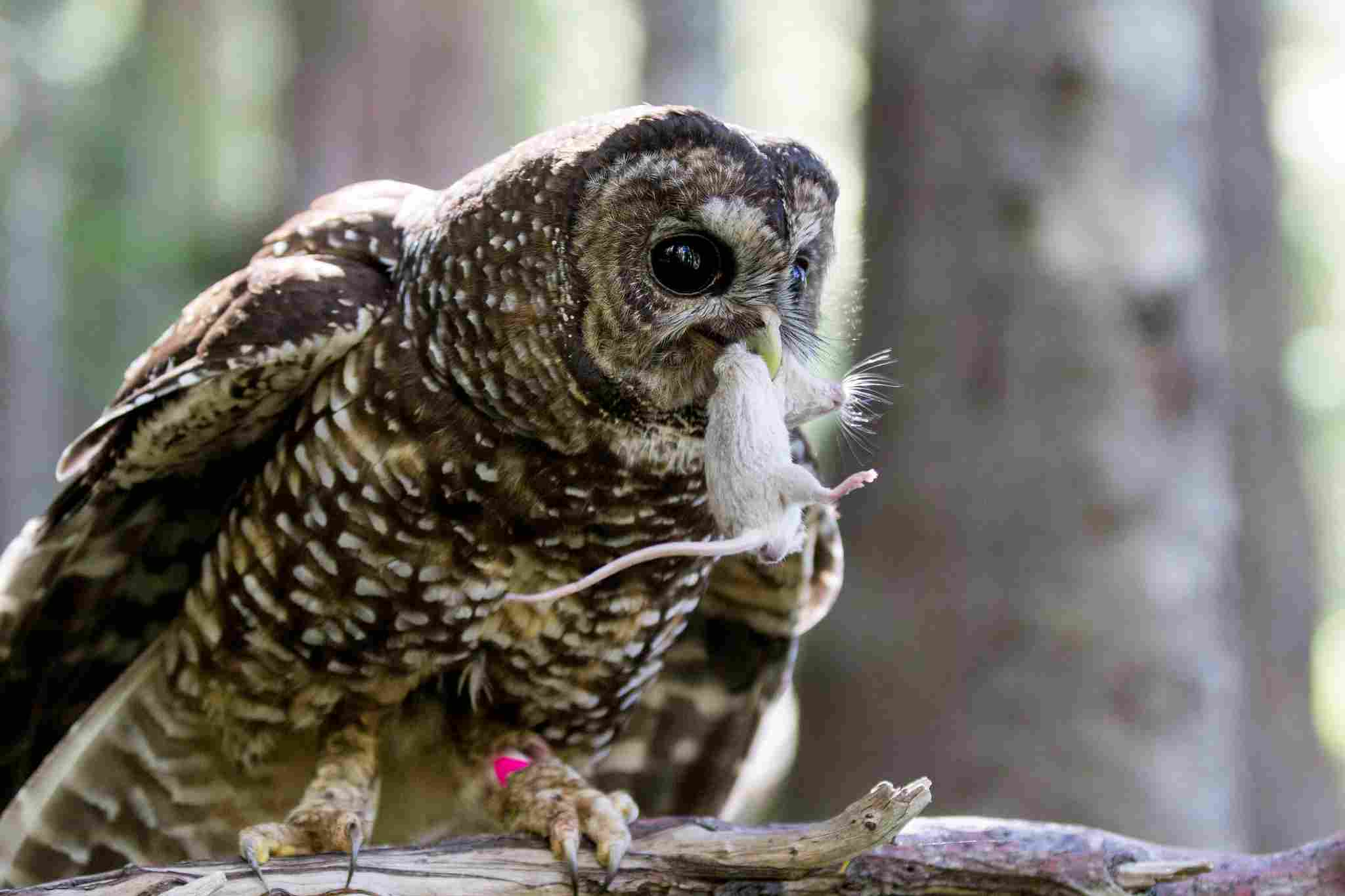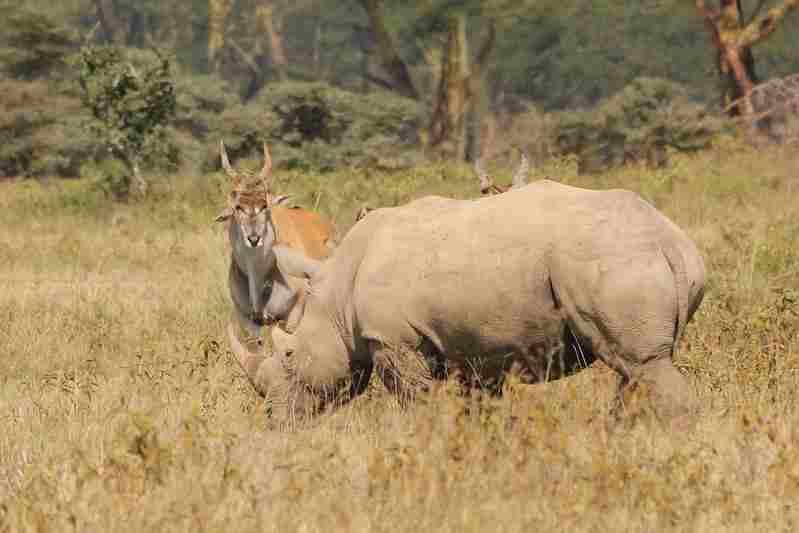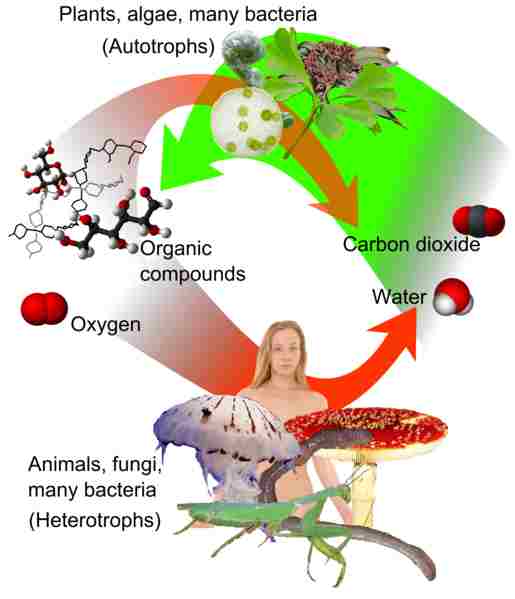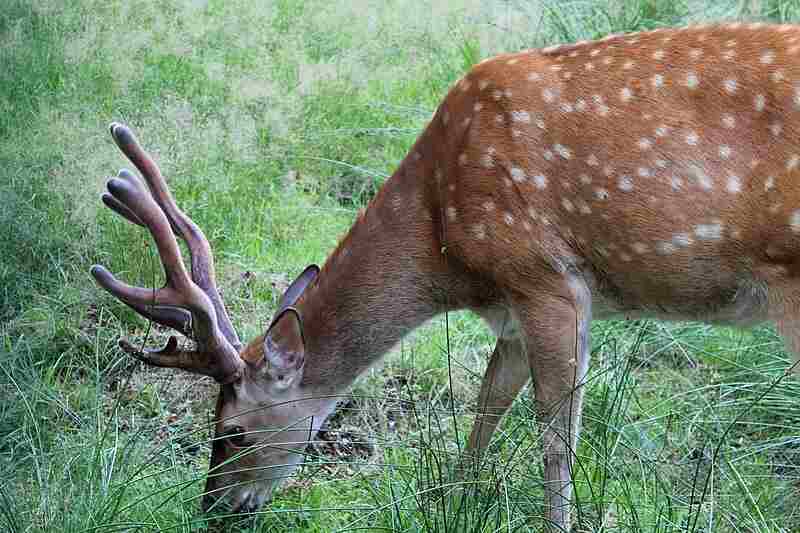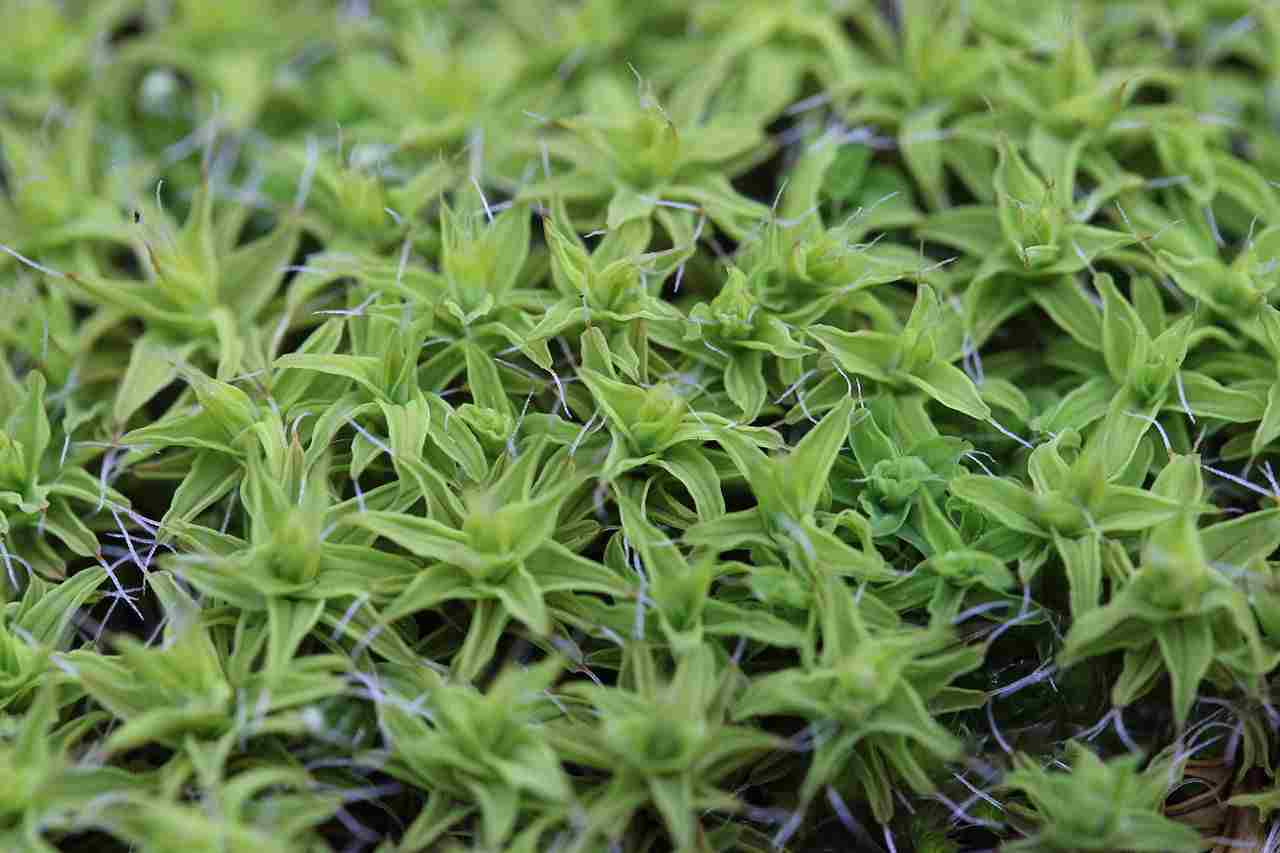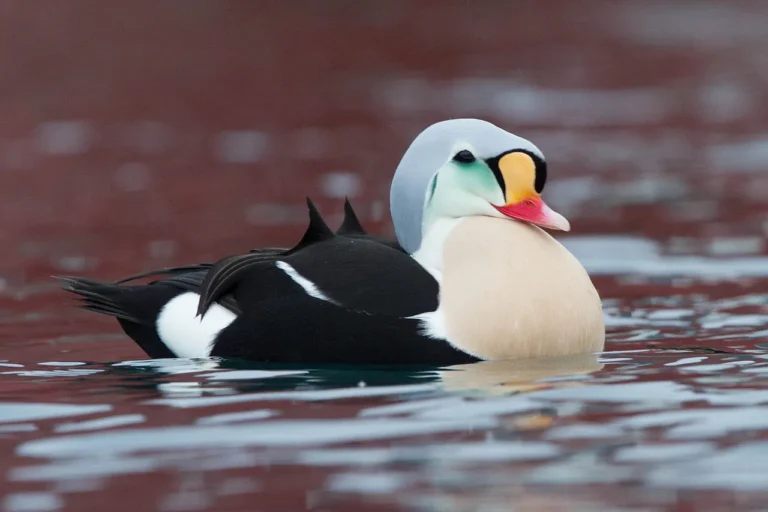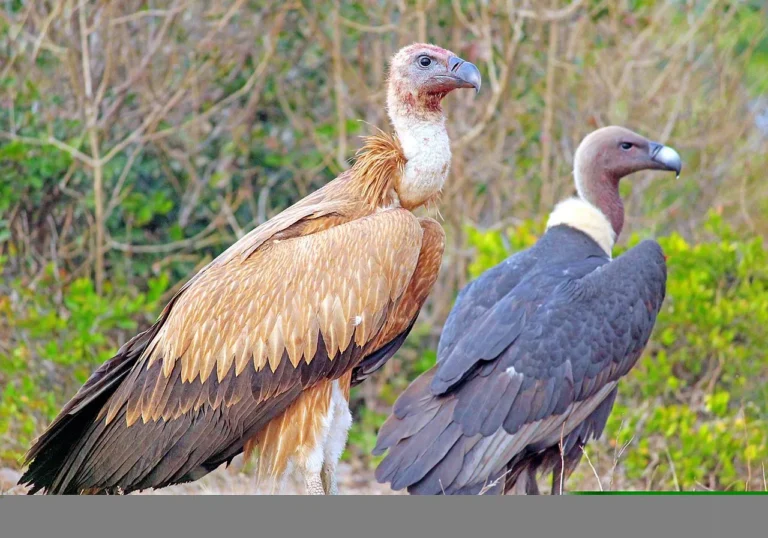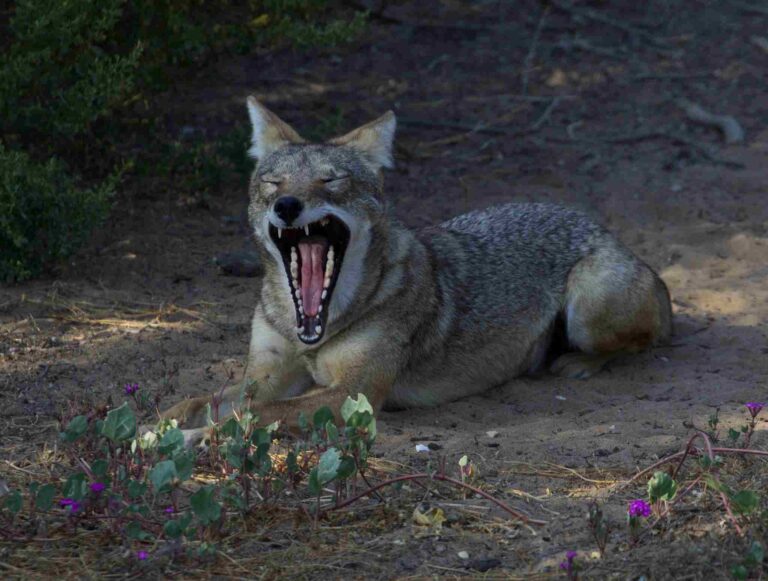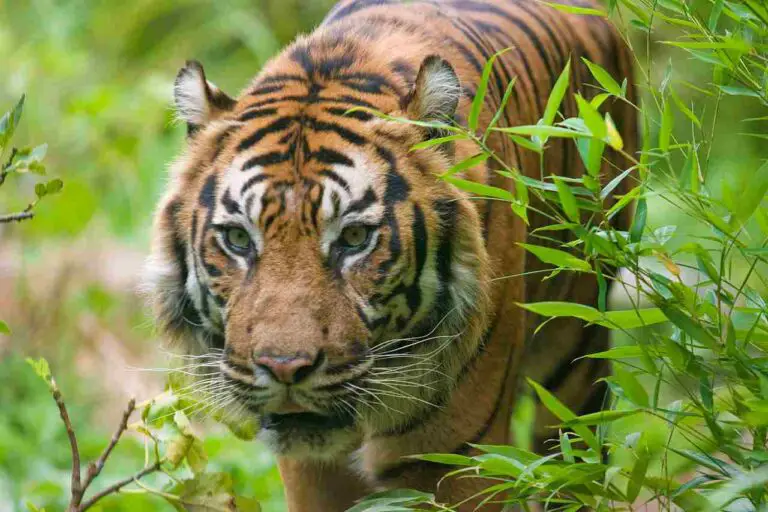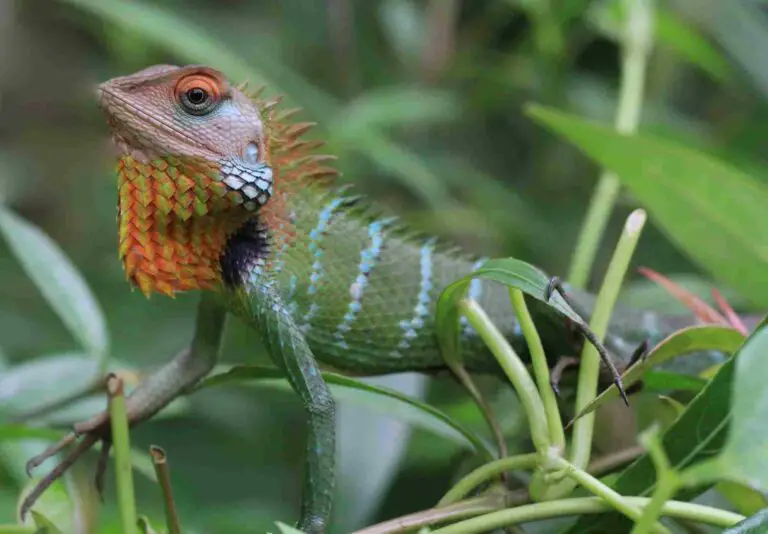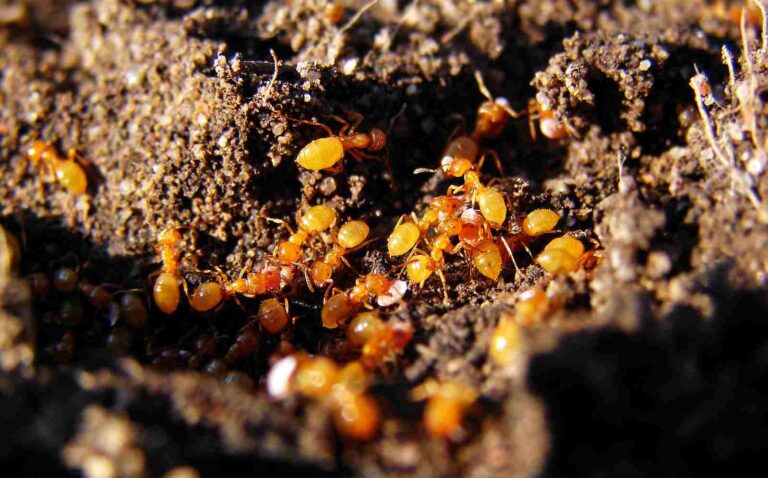Is an Owl a Consumer? Trophic Position/Role of Owls Discussed
An owl is a consumer because it must feed on other organisms to gain energy and nutrients for its own survival.
This article answers queries associated with the consumer status and role of owls.
Is an Owl a Producer or Consumer?
An owl is not a producer, but rather a consumer; because it does not possess the ability to manufacture its own food or biomass through synthesis (like photosynthesis or chemosynthesis). It also lacks some of the typical producer features like chlorophyll, roots, leaves, and rhizomes.
Unlike plants and other autotrophs, owls do not have chlorophyll pigments that enable them to convert sunlight into energy. Instead, they rely on consuming other organisms to obtain the energy and nutrients they need for survival. This makes them consumers in the food chain.
Owls are classified as heterotrophs, which means they obtain their energy by consuming other organisms. They are specifically categorized as carnivores, as their diet primarily consists of small mammals, birds, reptiles, and insects. Some owl species are known to be opportunistic hunters, feeding on a wide range of prey depending on availability.
While owls may not be producers, they play a crucial role in the ecosystem as secondary consumers. They occupy a trophic level above primary consumers, such as herbivores, and below tertiary consumers, such as top predators. Owls feed mostly on primary consumers, such as rodents and small birds, which in turn feed on plants. By controlling the population of these primary consumers, owls help maintain the balance of the ecosystem.
It’s important to note that owls are not the top predators in their habitats. There are larger and more powerful raptors, such as eagles and hawks, that occupy higher trophic levels. Owls have a smaller trophic cascading effect compared to tertiary consumers, as their prey base is limited to smaller animals.
Reasons Why an Owl is Not a Producer
1. Owls Have No Chlorophyll Pigments
Owls have no chlorophyll pigments, which is a reason why they are not considered producers in the food chain. Chlorophyll is a green pigment found in plants that allows them to carry out photosynthesis, the process by which they convert sunlight into energy. Since owls do not possess chlorophyll, they are unable to produce their own food through photosynthesis like plants do.
As consumers, owls rely on other organisms for their energy and nutrients. They are classified as heterotrophs, meaning they obtain their food by consuming other living organisms. Owls are carnivorous predators, feeding primarily on small mammals, birds, and insects. They use their sharp talons and beaks to capture and kill their prey.
Unlike producers, such as plants, owls do not have the ability to manufacture their own food. They lack the physiological features that are characteristic of producers, such as leaves and roots. Instead, owls have adapted to be efficient hunters, using their keen senses of sight and hearing to locate and catch their prey.
In the food chain, owls occupy a higher trophic level as secondary consumers. They feed on primary consumers, which are herbivores that consume plants. However, owls are not considered primary consumers themselves because they do not primarily consume plant material. Instead, they rely on the energy stored in the bodies of the animals they consume.
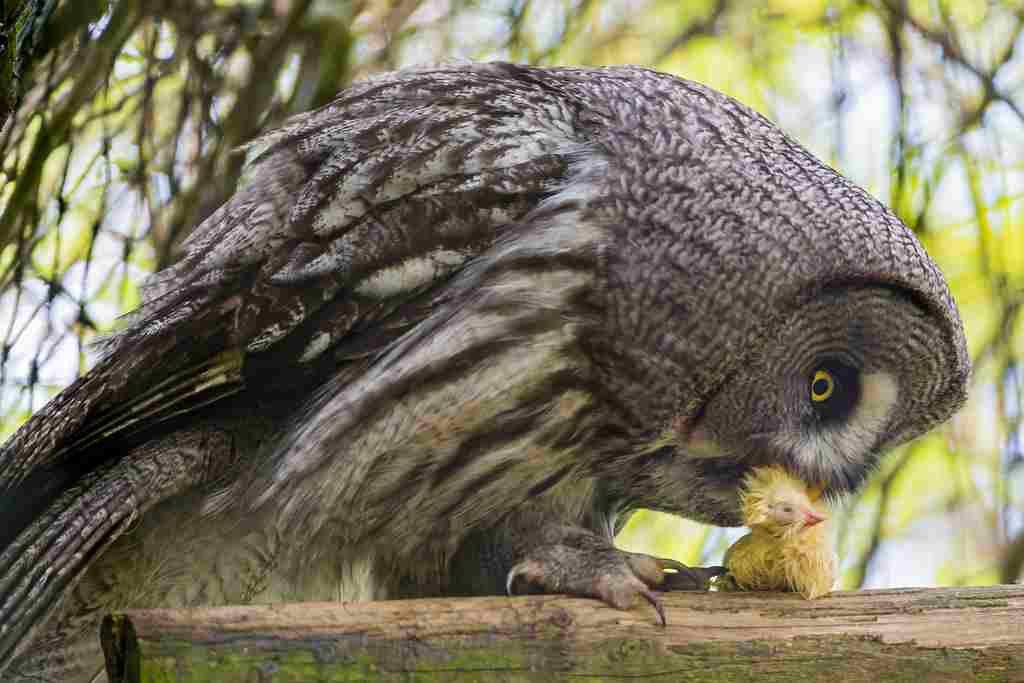
2. An Owl is Incapable of Manufacturing Its Own Food
An owl is not capable of manufacturing its own food like producers through photosynthesis and chemosynthesis. This inability to produce its own food is a key reason why owls are not considered producers in the food chain.
Unlike plants, which have chlorophyll pigments and can convert sunlight into energy through photosynthesis, owls lack this pigment and cannot carry out this process. Additionally, owls do not possess the necessary physiological features like leaves and roots that are characteristic of producers. These features allow plants to absorb nutrients from the soil and convert them into energy.
Instead, owls rely on other organisms for their energy and nutrients. They are classified as heterotrophs, meaning they obtain their food by consuming other living organisms. Owls are carnivorous predators, using their sharp talons and beaks to capture and kill their prey. They primarily feed on small mammals, birds, and insects.
Without the ability to manufacture their own food, owls have adapted to be efficient hunters. They have developed keen senses of sight and hearing, which they use to locate and catch their prey. Owls are known for their silent flight, allowing them to surprise their prey without being detected.
3. Owls Do Not Possess Producer Physiological Features like Leaves and Roots
Owls do not possess the physiological features like leaves and roots that are characteristic of producers. Unlike plants, which have leaves that capture sunlight and roots that absorb nutrients from the soil, owls lack these structures. This absence of producer physiological features is a key reason why owls are not considered producers in the food chain.
Leaves in plants contain chlorophyll pigments, which enable them to convert sunlight into energy through photosynthesis. However, owls lack chlorophyll pigments and are unable to carry out this process. Without the ability to harness energy from the sun, owls must rely on other organisms for their energy and nutrients.
Additionally, owls do not possess roots that allow plants to absorb nutrients from the soil. Instead, owls obtain their nutrients by consuming other living organisms. They are classified as heterotrophs, meaning they rely on external sources for their food.
In general, the absence of producer physiological features like leaves and roots is a clear distinction between owls and true producers in the food chain. Owls are dependent on other organisms for their energy and nutrients, making them consumers rather than producers.
What Type of Consumer is an Owl?
An owl is usually a secondary consumer in the ecosystem or food chain. This is because owls are neither herbivores (that is; primary consumers) or apex predators (tertiary or quaternary consumers).
Owls occupy a unique position in the food chain, as they primarily feed on small heterotrophic organisms such as rodents, birds, and insects. These organisms are considered primary consumers, as they directly consume plants or other producers. By preying on these primary consumers, owls obtain their energy and nutrients indirectly from the producers.
As secondary consumers, owls play a crucial role in regulating the population of their prey species. By controlling the population of primary consumers, owls help maintain the balance of the ecosystem. This is particularly important in controlling the population of rodents, which can have significant impacts on agricultural crops and other wildlife.
While owls primarily feed on primary consumers, they may occasionally consume other secondary consumers. For example, larger owl species may prey on smaller owl species or other birds of prey. However, these instances are relatively rare and do not significantly impact the overall trophic position of owls as secondary consumers.
It is important to note that the trophic position of an owl can vary depending on its habitat and available food sources. In some cases, owls may have access to a wider range of prey species, including larger mammals or reptiles. In such situations, owls may occupy a higher trophic position as tertiary consumers. However, this is not the typical scenario for most owl species.
Drawing from the above, owls are considered secondary consumers in the food chain due to their feeding habits and reliance on primary consumers for their energy and nutrients. While they may occasionally consume other secondary consumers, their primary role is to regulate the population of primary consumers and contribute to the overall balance of the ecosystem.
Is an Owl a Primary Consumer?
No, an owl is not a primary consumer because it does not rely on primary producers to serve as its food sources. Instead, owls are secondary consumers because they mainly feed on small heterotrophic organisms including primary consumers like field mice and squirrels.
As secondary consumers, owls play a vital role in the food chain by regulating the population of primary consumers. They help maintain the balance of the ecosystem by controlling the numbers of rodents, birds, and insects that they prey upon. By doing so, owls indirectly contribute to the overall health and stability of the ecosystem.
Owls primarily feed on small heterotrophic organisms that directly consume plants or other producers. These primary consumers obtain their energy and nutrients from the producers, such as plants or algae. By preying on these primary consumers, owls obtain their energy and nutrients indirectly from the producers. This makes them secondary consumers in the food chain.
While owls predominantly feed on primary consumers, there are instances where they may consume other secondary consumers. For example, larger owl species may prey on smaller owl species or other birds of prey. However, these occurrences are relatively rare and do not significantly impact the overall trophic position of owls as secondary consumers.
It is important to note that the trophic position of an owl can vary depending on its habitat and available food sources. In some cases, owls may have access to a wider range of prey species, including larger mammals or reptiles. In such situations, owls may occupy a higher trophic position as tertiary consumers. However, this is not the typical scenario for most owl species.
Reasons Why Owls are Not Primary Consumers
1. Owls are Not Herbivorous
Owls are not herbivorous, which is a key reason why they are not considered producers in the food chain. Unlike herbivores, owls do not consume plants or plant-based materials as their primary source of energy. Instead, owls are carnivorous predators that primarily feed on other animals, such as rodents, birds, and insects. Their diet consists mainly of small mammals, which they hunt and capture using their sharp talons and beaks. This carnivorous diet places owls in the category of consumers rather than producers.
By focusing on consuming other animals, owls play an important role in controlling populations of their prey species. They help maintain the balance of ecosystems by regulating the numbers of rodents and other small mammals, which can have significant impacts on vegetation and other organisms within their habitats. Owls are well-adapted to their predatory lifestyle, with specialized features such as keen eyesight, silent flight, and powerful talons that enable them to effectively capture and consume their prey.
Therefore, owls are not herbivorous and do not obtain their energy from plants. Instead, they are carnivorous predators that consume other animals, placing them in the category of consumers in the food chain. Their diet primarily consists of small mammals, and they play a crucial role in maintaining the balance of ecosystems by controlling the populations of their prey species.
2. Some Primary Consumers are Prey for Owls
One of the reasons why an owl is not considered a producer is because it preys on primary consumers. In the trophic hierarchy, primary consumers are organisms that directly consume producers, such as plants or algae. They are typically herbivores that obtain their energy from consuming plant-based materials. However, owls occupy a higher trophic level as predators, which means they are above primary consumers in the food chain.
Owls primarily feed on small mammals, such as rabbits and prairie dogs, which are examples of primary consumers. These animals rely on plants as their primary source of energy and are considered herbivores. However, they also become prey for owls, who hunt and consume them. This predation relationship places owls in a higher trophic level than primary consumers, as they consume organisms that are lower in the food chain.
By preying on primary consumers, owls play a crucial role in regulating their populations. They help control the numbers of these herbivorous animals, which can have significant impacts on vegetation and other organisms within their habitats. This predation helps maintain the balance of ecosystems by preventing overpopulation of primary consumers and the subsequent depletion of plant resources.
Is an Owl a Secondary Consumer?
An owl is a secondary consumer in most ecosystems, as it occupies a higher trophic level than primary consumers like rabbits and prairie dogs. This higher trophic level is determined by the owl’s predation potential and trophic cascading effect.
As a secondary consumer, owls feed mostly on primary consumers such as small mammals. These primary consumers rely on plants as their primary source of energy and are considered herbivores. However, they also become prey for owls, who hunt and consume them. This predation relationship places owls in a higher trophic level than primary consumers, as they consume organisms that are lower in the food chain.
The predation potential of owls is an important factor in determining their trophic position. Owls have evolved specialized adaptations that allow them to effectively hunt and capture their prey. Their sharp talons and beaks, along with their exceptional hearing and night vision, make them highly efficient predators. These adaptations enable owls to successfully prey on primary consumers, further establishing their role as secondary consumers in the ecosystem.
Another aspect that places owls in the secondary consumer category is their trophic cascading effect. While owls primarily feed on primary consumers, they also have an impact on the populations of other organisms within their habitat. By controlling the numbers of primary consumers, owls help regulate the balance of ecosystems. This, in turn, affects the availability of resources for other organisms, including both producers and other consumers.
Therefore, an owl is considered a secondary consumer due to its predation potential and trophic cascading effect. By feeding on primary consumers and playing a role in regulating their populations, owls occupy a higher trophic level in the food chain.
Reasons Why an Owl is a Secondary Consumer
1. Owls Feed Mostly on Primary Consumers
Owls feed mostly on primary consumers, such as herbivorous rodents, which is a key reason why they are classified as secondary consumers. By preying on these primary consumers, owls obtain their energy and nutrients indirectly from the producers in the food chain. This makes them an important link in the trophic structure of their ecosystem.
As secondary consumers, owls play a crucial role in regulating the population of primary consumers. By controlling the numbers of herbivorous rodents, owls help maintain the balance of the ecosystem. This is particularly important in agricultural areas where rodents can cause significant damage to crops.
Owls have evolved specialized adaptations that enable them to effectively hunt and capture their prey. Their sharp talons and beaks allow them to grasp and kill their primary consumer prey with precision. Additionally, owls have excellent hearing and night vision, which further enhance their hunting abilities.
While owls primarily feed on primary consumers, they are not limited to a single food source. Depending on their habitat and availability of prey, owls may also consume other secondary consumers, such as small birds or reptiles. This flexibility in their diet allows owls to adapt to changes in their environment and ensures their survival.
Therefore, owls feed mostly on primary consumers, like herbivorous rodents, which is a key reason why they are classified as secondary consumers. Their role in regulating the population of primary consumers and their specialized adaptations for hunting make them an integral part of the trophic structure of their ecosystem. Owls’ ability to adapt their diet further highlights their importance as secondary consumers in maintaining the balance of their habitats.
2. There are Larger and More Powerful Raptors in the Owl’s Habitat
In the owl’s habitat, there are larger and more powerful raptors, such as eagles and ferruginous hawks. This is a significant factor that contributes to the owl’s classification as a secondary consumer.
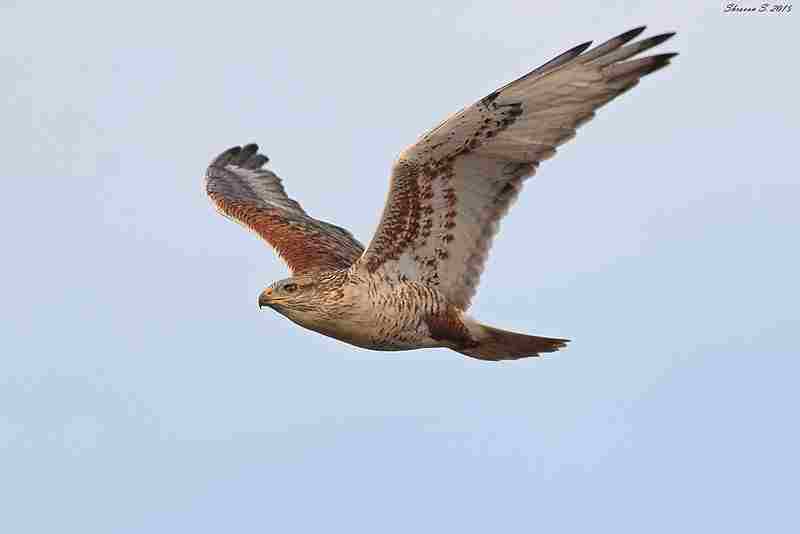
The presence of these larger raptors creates competition for resources within the ecosystem. While owls primarily feed on primary consumers, they may occasionally scavenge or steal prey from these larger raptors. However, due to their smaller size and less powerful hunting capabilities, owls are often at a disadvantage when competing for food with these dominant predators.
The larger raptors in the owl’s habitat also play a role in shaping the trophic structure of the ecosystem. As top predators, they exert a greater influence on the population dynamics of both primary and secondary consumers. This means that the larger raptors have a more significant trophic cascading effect compared to owls.
Despite the competition and potential limitations imposed by the presence of larger raptors, owls have adapted to thrive in their habitat. They have developed unique hunting strategies and specialized adaptations that allow them to successfully capture and consume their primary consumer prey. Owls’ exceptional night vision and silent flight enable them to hunt efficiently, even in low-light conditions.
Therefore, the presence of larger and more powerful raptors in the owl’s habitat is a key reason why owls are classified as secondary consumers. While they face competition for resources, owls have evolved to overcome these challenges and play an important role in the trophic structure of their ecosystem.
3. Owls Have a Smaller Trophic Cascading Effect Than Tertiary Consumers
Owls, despite being secondary consumers, do not exert the same magnitude of trophic cascading as tertiary consumers. This is due to several factors that differentiate owls from apex predators at the top of the food chain.
Firstly, owls primarily feed on primary consumers, such as rodents and small mammals. While they play a crucial role in controlling the population of these prey species, their impact on the trophic structure is limited compared to tertiary consumers. Tertiary consumers, on the other hand, feed on secondary consumers, which in turn feed on primary consumers. This multi-level feeding relationship allows tertiary consumers to have a more significant influence on the population dynamics of the entire ecosystem.
Secondly, owls have a smaller body size and hunting range compared to many tertiary consumers. This means that their foraging activities are more localized and their prey selection is relatively limited. Tertiary consumers, on the other hand, often have a wider range and can target a broader range of prey species. This broader hunting range allows them to have a more substantial impact on the trophic structure of the ecosystem.
Lastly, owls have a lower reproductive rate compared to many tertiary consumers. This means that their population size and density are generally lower, resulting in a smaller trophic cascading effect. Tertiary consumers, with their higher reproductive rates and larger population sizes, can exert a more significant influence on the lower trophic levels.
Is an Owl a Tertiary Consumer?
An owl is not a typical tertiary consumer because it does not occupy the role of an apex predator at the top of the food chain or energy pyramid. Unlike larger raptors such as eagles, peregrine falcons, and certain hawk species like the ferruginous hawk, owls do not possess the characteristics necessary to be classified as tertiary consumers. These characteristics include being at the highest trophic level and exerting a significant influence on the population dynamics of the ecosystem.
Firstly, owls primarily feed on primary consumers, such as rodents and small mammals. While they play a crucial role in controlling the population of these prey species, their impact on the trophic structure is limited compared to tertiary consumers. Tertiary consumers, on the other hand, feed on secondary consumers, which in turn feed on primary consumers. This multi-level feeding relationship allows tertiary consumers to have a more significant influence on the population dynamics of the entire ecosystem.
Secondly, owls have a smaller body size and hunting range compared to many tertiary consumers. This means that their foraging activities are more localized and their prey selection is relatively limited. Tertiary consumers, on the other hand, often have a wider range and can target a broader range of prey species. This broader hunting range allows them to have a more substantial impact on the trophic structure of the ecosystem.
Lastly, owls have a lower reproductive rate compared to many tertiary consumers. This means that their population size and density are generally lower, resulting in a smaller trophic cascading effect. Tertiary consumers, with their higher reproductive rates and larger population sizes, can exert a more significant influence on the lower trophic levels.
However, it is important to note that some owl species, such as the eagle-owl, are relatively large and can function as tertiary consumers or even apex predators in certain ecosystems and food chains. In these specific cases, where larger predators, especially raptors, are not present, the eagle-owl can occupy the role of a tertiary consumer. This highlights the flexibility and adaptability of owls in different ecological contexts.
Therefore, while owls are not typically considered tertiary consumers, they play a vital role as secondary consumers in controlling the population of primary consumers. Their feeding habits, body size, and reproductive rates differentiate them from apex predators at the top of the food chain. Understanding the trophic position and role of owls contributes to our knowledge of ecosystem dynamics and the intricate relationships between organisms in nature.
FAQs
1. Is an Owl a Producer in the Food Chain?
When considering the trophic position or role of owls in the food chain, it is clear that owls are not producers.
Owls do not possess the necessary characteristics to be classified as producers. Producers, such as plants, algae, and some bacteria, are able to convert sunlight into energy through the process of photosynthesis. This energy is then used to produce organic compounds, including carbohydrates, which serve as food for other organisms in the food chain. However, owls lack the chlorophyll pigments necessary for photosynthesis, making them incapable of producing their own food.
Furthermore, owls are unable to manufacture their own food through other means. Unlike some animals that are capable of synthesizing nutrients from inorganic sources, owls rely entirely on consuming other organisms for their energy and nutritional needs. They are classified as heterotrophs, which means they obtain their energy by consuming other organisms.
In addition to lacking the physiological features of producers, such as leaves and roots, owls also do not contribute to the production of organic matter in the ecosystem. They do not play a role in the carbon cycle or contribute to the overall productivity of the ecosystem through the production of biomass.
2. Is an Owl Considered to be a Producer Primary Consumer or Secondary Consumer
When examining the trophic position of owls in the food chain, it becomes clear that owls are primarily classified as secondary consumers. Therefore, an owl is neither a producer nor a primary consumer.
As discussed earlier, owls do not possess the necessary characteristics to be classified as producers. They lack chlorophyll pigments, which are essential for photosynthesis and the production of their own food. Instead, owls rely on consuming other organisms for their energy and nutritional needs. This makes them heterotrophs, obtaining their energy by consuming other organisms.
While owls do consume other organisms, they are not considered primary consumers. Primary consumers, also known as herbivores, primarily feed on plants and algae. Owls, on the other hand, are carnivorous and feed mostly on small mammals, birds, and insects.
Therefore, owls are classified as secondary consumers. They occupy a higher trophic level in the food chain, feeding on primary consumers. Owls play an important role in regulating populations of their prey species and maintaining the balance of the ecosystem.
3. Are Owls carnivores or omnivores
Owls are carnivores, meaning they primarily feed on other animals. This classification is based on their diet, which consists mainly of small mammals, birds, and insects. Owls have sharp beaks and talons that are well-suited for capturing and killing their prey. They are skilled hunters, using their excellent vision and hearing to locate and catch their food.
Unlike omnivores, which have a more varied diet that includes both plants and animals, owls rely solely on animal sources for their nutrition. This makes sense considering their physiology and adaptations. Owls have sharp, hooked beaks that are designed for tearing flesh, not for consuming plant matter. Additionally, their digestive systems are specialized for processing animal protein.
Being carnivores, owls play an important role in the food chain and ecosystem. By preying on smaller animals, they help to control populations and maintain balance within their habitats. Owls are also known for regurgitating pellets, which are composed of indigestible materials such as fur, bones, claws, and teeth. These pellets provide valuable insights into the diet and feeding habits of owls.
4. What is an Owl Pellet?
Owl pellets are a fascinating aspect of owl biology and behavior. These pellets are round boluses formed from indigestible materials such as fur, bones, claws, and teeth. They are regurgitated by owls through their beaks.
Owl pellets serve as a valuable tool for scientists and researchers to study the diet and feeding habits of owls. By dissecting these pellets, they can identify the remains of the prey species that the owl has consumed. This provides insights into the ecological role of owls and their impact on local ecosystems.
The formation of owl pellets is a result of the owl’s digestive system. Owls, like other birds, have a specialized digestive system that consists of a crop and a gizzard. When an owl consumes its prey, the digestible parts are broken down and absorbed, while the indigestible parts are compacted into a pellet in the gizzard. Eventually, the owl regurgitates the pellet, allowing it to continue hunting and consuming more prey.
Owl pellets are often found in the habitats where owls reside, such as forests, grasslands, and wetlands. They can be collected and analyzed by scientists to gain a better understanding of the owl’s diet, the diversity of prey species in an area, and the overall health of the ecosystem.
5. Is an Owl Considered to be a Heterotroph or Autotroph?
An owl is considered to be a heterotroph. As a heterotroph, an owl relies on consuming other organisms to obtain the energy and nutrients it needs to survive. Unlike autotrophs, such as plants, owls do not have the ability to manufacture their own food through photosynthesis.
Owls are carnivorous predators that primarily feed on small mammals, birds, reptiles, and insects. They have sharp beaks and talons that enable them to capture and kill their prey. Once the prey is caught, the owl uses its strong digestive system to break down and absorb the nutrients from the consumed organisms.
This classification as a heterotroph is consistent with the earlier discussions on the trophic position of owls. We have established that owls are secondary consumers, feeding mostly on primary consumers. This reinforces the fact that owls rely on consuming other organisms as a source of energy and nutrients.
6. 6. Is an Owl a Quaternary Consumer?
An owl is not typically considered a quaternary consumer. Quaternary consumers are usually larger predators, such as eagles and wolves, that feed on other secondary consumers. Owls, on the other hand, are generally classified as secondary consumers in the food chain.
As discussed earlier, owls primarily feed on small mammals, birds, reptiles, and insects, which are considered primary consumers. They occupy a trophic level above the primary consumers but below the quaternary consumers. Owls play an important role in maintaining the balance of the ecosystem by controlling the population of their prey.
While owls may occasionally consume other secondary consumers, such as other birds or small mammals, this does not make them quaternary consumers. Their diet mainly consists of primary consumers, making them secondary consumers in most cases.
Conclusion
* In this article, we have explored the trophic position and role of owls in the food chain.
* We have discussed why owls are not considered producers, as they lack chlorophyll pigments and the ability to manufacture their own food.
* Additionally, we have examined whether owls are primary, secondary, or tertiary consumers, highlighting the reasons behind each classification.
* It is important to note that owls primarily feed on primary consumers, such as small mammals, birds, reptiles, and insects.
* While they may occasionally consume other secondary consumers, this does not make them quaternary consumers.
* Owls play a crucial role in maintaining the balance of the ecosystem by controlling the population of their prey.
* They occupy a trophic level above the primary consumers but below the quaternary consumers.
* By feeding on primary consumers, owls contribute to the overall stability and functioning of the ecosystem.
